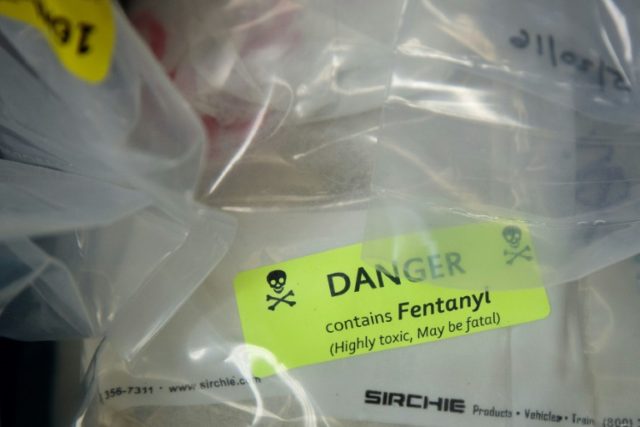A U.S. district court judge sentenced a Texas man to serve 20 years in federal prison for his role in a large-scale fentanyl distribution ring where he sold up to 10 grams a day of a designer version of the dangerous synthetic opioid.
Brian Landon Brown, 32, was convicted previously on one count of conspiracy to distribute and possess with intent to distribute furanyl fentanyl. Federal and state law enforcement agencies linked him directly to the overdose that killed a Lubbock area man.
“Fentanyl and its analogues are extremely potent synthetic opioids that can be 30 to 40 times stronger than heroin and up to 100 times more powerful than morphine,” said John Parker, U.S. Attorney for the Northern District of Texas, when he announced Brown’s sentencing on Friday. “As sadly proved to be the case here, it is also extremely deadly and failure to stop those who sell it is simply not an option.”
Brown pleaded guilty to the conspiracy charge in June but the investigation leading to his arrest began last year. Plea documents revealed that during the summer of 2016, the U.S. Drug Enforcement Administration (DEA) and the Lubbock Police Department received tips about a massive drug ring distributing fentanyl analogues in the Lubbock area. Law enforcement agencies learned that Brown was one of the region’s largest distributors. Reportedly, he sold up to 10 grams of furanyl fentanyl per day.
In late 2016, police directly linked him to the fentanyl overdose death of a 26-year-old Lubbock male. According to the U.S. Attorney’s office, Brown met with and sold the man furanyl fentanyl on October 6. Later, this individual was found unconscious in his home. Authorities pronounced him dead around 5 a.m. the next morning. The Lubbock County Medical Examiner performed an autopsy and determined the cause of death was drug toxicity from furanyl fentanyl. A subsequent investigation led police to Brown.
However, when officers arrested him on October 17 it was over an unrelated warrant. At the time, Brown had a vial of .291 net grams of furanyl fentanyl on his person and admitted that he typically sold several grams of this type of designer fentanyl each day.
Breitbart Texas reported that since 1999, the number of prescription opioids like oxycodone (OxyContin), hydrocodone (Vicodin), morphine, and methadone dispensed in the United States almost quadrupled. Heroin is an illegal opioid. Tramadol and fentanyl are synthetic versions.
The U.S. Drug Enforcement Administration (DEA) describes fentanyl as up to “50 times more potent than heroin and 50 to 100 times more potent than morphine.” Fentanyl-related substances include Acetyl fentanyl, 3-methylfentanil and furanyl fentanyl. Carfentanyl is up to 100 times more potent than fentanyl.
Furanyl fentanyl is considered a Schedule II controlled substance under the Controlled Substances Act. It has a stimulant, depressant, or hallucinogenic effect on the central nervous system that is substantially similar to or greater than the effects of regular fentanyl, also a Schedule II controlled substance. A lethal dose of furanyl fentanyl is the equivalent of a single grain of salt. In its purest form, fentanyl synthetics come as either salt-like grains or a white powder. The DEA warns it is extremely dangerous to law enforcement and anyone else who may come into contact with it. The opioid can be inhaled or absorbed through the skin and mucous membranes.
The Centers for Disease Control and Prevention (CDC) accounted for nearly 2 million Americans who abused or became dependent on prescription opioid painkillers in 2014. Nationwide, they reported more than 33,000 opioid-related deaths one year later.
Follow Merrill Hope, a member of the original Breitbart Texas team, on Twitter.

COMMENTS
Please let us know if you're having issues with commenting.